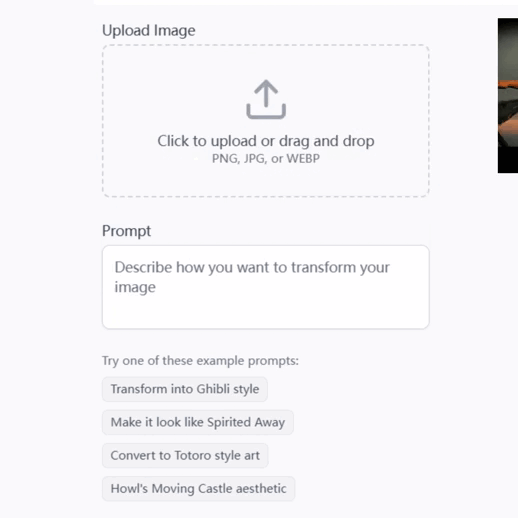
Reverse Image Search - tool for reverse image lookup

Hi! I'm here to help you with your image searches.
AI-powered tool for image recognition
Upload an image, and I'll help you find its source and related information.
Need details about an image? Share it with me, and I'll do the searching for you.
Curious about an artwork or photo? Let me analyze it and provide insights.
Want to identify an image? I'm here to help you discover its origins and context.
Get Embed Code
Overview of Reverse Image Search
Reverse Image Search is a specialized tool designed to identify and analyze images uploaded by users. It functions by comparing the uploaded image against a vast database of images indexed from the web to find matches or similar pictures. This process involves advanced algorithms that analyze the image's content, such as colors, shapes, and patterns, rather than relying on metadata or text descriptions. This capability is particularly useful in identifying the source of an image, understanding its context, and finding where else it has been used on the web. For example, an art historian might use Reverse Image Search to trace the provenance of a rare painting, while a journalist might use it to verify the authenticity of a controversial image circulating on social media. Powered by ChatGPT-4o。

Core Functions of Reverse Image Search
Source Identification
Example
A user uploads a meme to determine its original source and context.
Scenario
This function helps individuals or content creators track where an image originated, which is vital for attribution or to explore the evolution of the image's use over time.
Similar Image Discovery
Example
A designer looks for similar images to a concept art to find inspiration or check for copyright issues.
Scenario
By uploading a specific image, users can find visually similar images, allowing them to explore variations on a theme, find images with similar aesthetics, or ensure that their own creations are unique.
Context and Information Retrieval
Example
A user finds an old family photo and uploads it to uncover more about its historical context or similar existing images.
Scenario
This is particularly beneficial for researchers, historians, or genealogists seeking to gather more information about the image’s era, location, or subjects, which can be pivotal in historical documentation or family history research.
Target Users of Reverse Image Search
Content Creators
Bloggers, journalists, meme creators, and social media managers who frequently engage with multimedia content can use Reverse Image Search to verify the authenticity of images, find their origins, or seek copyright permissions.
Academic and Industry Researchers
This group includes historians, sociologists, media researchers, and market analysts who require detailed background information and verification for images related to their research topics. They benefit from accessing a wide array of similar images and the historical data associated with them.
General Public and Enthusiasts
Everyday users interested in discovering more about pictures they encounter, verifying image authenticity, or simply exploring images similar to those they appreciate. This includes hobbyists, genealogists, and amateur historians.

How to Use Reverse Image Search
1
Visit yeschat.ai for a free trial without login; no need for ChatGPT Plus.
2
Upload or paste the image link that you want to search, ensuring that the file type is supported.
3
Select the relevant search parameters, like the search engine or platform you wish to use.
4
Click 'Search' to initiate the query and view the results once available.
5
Analyze the results to identify image sources, duplicates, or related content, and save or refine your search if needed.
Try other advanced and practical GPTs
Koe 🇧🇷
Optimize productivity with AI-driven insights.

Tailwind and Framer Motion Designer
Animate and style UI with AI-powered tools

Marketing
Empower Your Marketing with AI

GameMaker Studio
Craft Games Seamlessly with AI

高质量GPT
Elevate Intelligence with AI Insights

Dan Kennedy - Marketer
Empower Your Marketing with AI

JSON Schema Architect
Empower your APIs with AI-driven schema architecture.

Academic Writing Pal | Business Scholarship Ed.
Empower Your Academic Writing with AI

英语学习助手
Master English with AI-Powered Insights

FAB (feature advantage benefits) Product Analysis
Empowering Decisions with AI Analysis

Helga - Dominant AI Girlfriend
Empower Your Decisions with AI

Alan - SWE Assistant
Enhance your coding skills with AI

Reverse Image Search Q&A
What is Reverse Image Search, and how does it work?
Reverse Image Search is a method of searching the internet for identical or similar images by uploading an image or providing its URL. The tool compares it to existing web images, returning results that include duplicates, similar images, or information related to the image.
What types of files can I upload for a search?
You can upload various standard image formats, including JPEG, PNG, and GIF. Ensure the image is of reasonable quality and size to improve the search results.
When is Reverse Image Search particularly useful?
It is useful when identifying image sources, verifying the authenticity of an image, tracking image copyright violations, or finding higher-resolution versions of images.
Can Reverse Image Search identify objects or people in an image?
Yes, advanced algorithms can often identify objects, landmarks, or celebrities within an image, providing relevant context or metadata where available.
How accurate are Reverse Image Search results?
Accuracy depends on factors like the quality of the uploaded image and available database. Clear and unique images tend to produce more accurate results.






